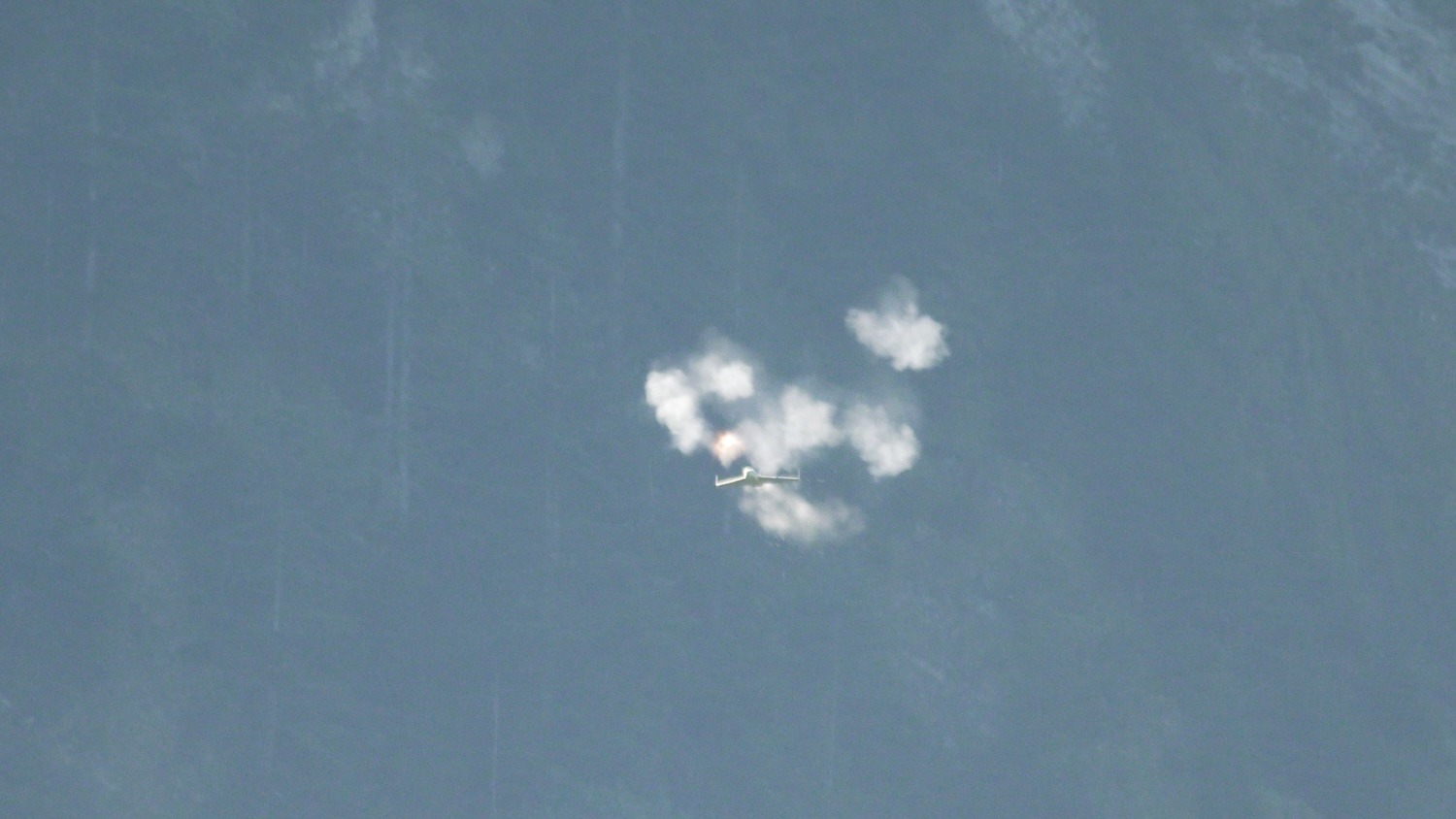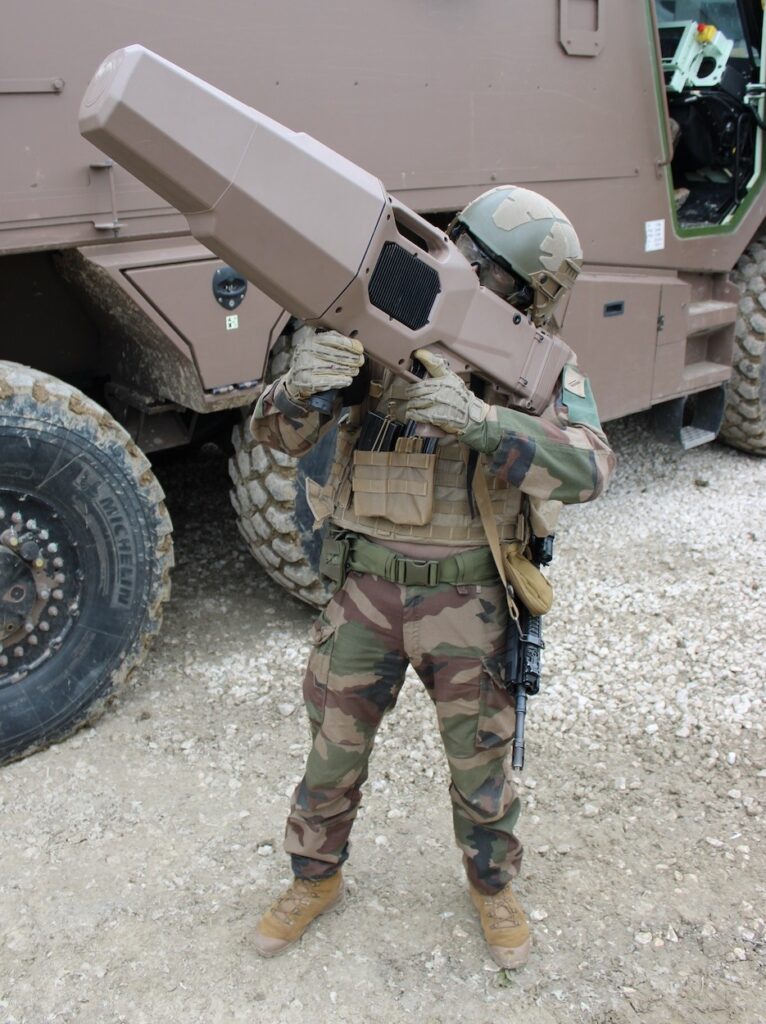
Strengthening the security and defence industry
28. August 2025

They circle over airports, spy on military bases and threaten critical infrastructure. Sightings of suspicious drones are increasing across Europe. The air defence systems of many countries are at their limits. In Germany, the problem is more about the unclear legal situation than with the technology itself.

Mobile air defence
The Skyranger is a highly mobile hybrid air defence system designed to encounter modern airborne threats. Thanks to its airburst ammunition (AHEAD technology with a programmable airburst point), the system is especially effective against small, unmanned targets such as drones. While the cannon offers advantages at short ranges, the integrated guided missile can be used to increase the range. As a networked and mobile system, a Skyranger battery can easily combat a swarm of drones, thus avoiding the saturation effect of a large number of drones. Rheinmetall also offers a stationary version of the system called Skynex.
“We are not at war, but we are no longer at peace either”. With these words, the Chancellor of the Federal Republic of Germany, Friedrich Merz, outlines the security situation in which Germany and Europe are at present. It is difficult to determine who exactly is behind the unmanned drone attacks. There are many indications that it could be Russia, by using them as a means of hybrid warfare. However, there is no doubt that the European airspace remains inadequately protected against such threats. In Germany, there is another complicating factor. Politics, the armed forces, security forces, society and the judiciary are ill-prepared for the invisible fronts in hybrid warfare. Depending on the type of drone and the airspace violated, responsibility lies with either the Bundeswehr, the state police or the federal police. Furthermore, the military is only permitted to operate armed within the country during times of tension or defence, but not in times of peace. To date, a corresponding amendment to the law has not yet found a majority in parliament.
In response to the new nature of hybrid warfare, there are various approaches in EU and NATO to pursue an ambitious project: a so-called drone wall is to protect Europe’s eastern flank from unmanned aerial vehicles. Such a multi-stage defence system could consist of sensors, jammers and high-tech cannons.
Digital networking will increase efficiency
The focus is therefore on highly mobile, interoperable systems that can be flexibly deployed wherever they are needed. Oliver Dürr, Head of the Electronic Solutions Division and Managing Director of Rheinmetall Air Defence, explains: “Effective drone defence requires comprehensive networking of all sensors, effectors and units involved. This is the only way to detect and assess threats at an early stage, speed up command channels and respond to attacks with the appropriate level of intensity”. After all, using the proverbial sledgehammer to crack a nut can pose greater risks in a civilian environment than the drone itself. The key lies in proportionality – and in the speed of response. “As a systems provider and one of the world’s leading manufacturers of close- and short-range air defence systems, we have extensive expertise in developing appropriate solutions”.



Multi-layered air defence
Drones are easy to combat because they often fly at slow speed and at a low altitude. Nevertheless, there is no comprehensive defence technology, according to Dürr. “They are all too different”. The challenge is to detect small mini and micro drones, and in the defence against swarm attacks. According to Dürr, success in air defence requires the combination of several countermeasures. These range from electronic jamming devices (known as jammers) and microwaves via fighter drones, ram drones, tube weapons and high-energy lasers. Modern guided missiles are also effective at disabling UAVs. However, these methods are far more expensive than conventional ones.
Protection of civilian infrastructure
In the civilian sector, jammers are a widely used defence technique. They interrupt communication between the drone and its pilot. Hence, the UAV can be forced to land or to be ‘taken over’, or they crash. Some countries have also equipped their military with special fire control sights for handguns to take drones out of the sky with targeted shots as a rapid response measure. Other armed forces use scatterguns to shoot down flying objects at close range as their pellets quickly lose speed and energy. This makes scatterguns safer for use in urban environments than firearms with full metal jacket bullets. Some ammunition manufacturers have already responded by developing their own anti-drone formulations.
Cannons against swarms
And in the traditional military sector? Here, cannon-based air defence systems such as Rheinmetall’s Skyranger are impressive in terms of efficiency, reliability and cost-effectiveness. “Modern machine guns are in high demand as for the cost-effective counter measures against inexpensive drones at a closer range”, says Oliver Dürr. The Ukraine is set to receive the Skyranger with the 35 mm medium-calibre cannon before the end of the year. Further Skyranger 30 systems will be delivered to various NATO and EU countries from mid-2026 onwards. These include the Bundeswehr, who ordered 18 series-production anti-aircraft gun tanks on the Boxer vehicle, and have been testing a prototype since January 2025. The procurement of this new defensive weapon is part of the European Sky Shield Initiative. In addition to Germany, 23 other European countries are participating in the programme to contribute to a comprehensive air defence for Europe.
When fiction becomes reality
“In addition to electronic, drone and cannon-based defence technologies, laser weapon systems will become significantly more important in the future”, says Alexander Graf, Head of Programme Management for Beam Weapons and Research & Technology at Rheinmetall Weapon and Munition in Unterlüß. “The German Navy has already tested technologies that we have only seen in science fiction movies until now”. Rheinmetall is also on board. The company is investing heavily in developing modern laser weapon systems and is working alongside European partners to create practical solutions for usage by land and naval forces.

“Systems with outputs of around 30 kilowatts and above are seen as tactically deployable in the future, particularly for drone defence”, Graf reports. These systems offer decisive advantages over conventional weapons. They require only electric energy. If sufficient power is available, they can fire their photon beam at almost unlimited speed. Even small and agile targets such as drone sensors can be hit reliably and precisely from a distance of up to several kilometres. Since laser weapons do not use physical ammunition, the risk of collateral damage during operations in urban areas is extremely low. The cost per shot at around €1.50 is also reasonable.
When it comes to defending drones, Europe can learn a lot from the Ukrainian experience. Every day, Ukraine demonstrates how effective defence works today: flexible, with modular technology and staggered systems. The industry has the right solutions at its disposal. Now it’s up to the politics.
Click here to receive push notifications. By giving your consent, you will receive constantly information about new articles on the Dimensions website. This notification service can be canceled at any time in the browser settings or settings of your mobile device. Your consent also expressly extends to the transfer of data to third countries. Further information can be found in our data protection information under section 5.